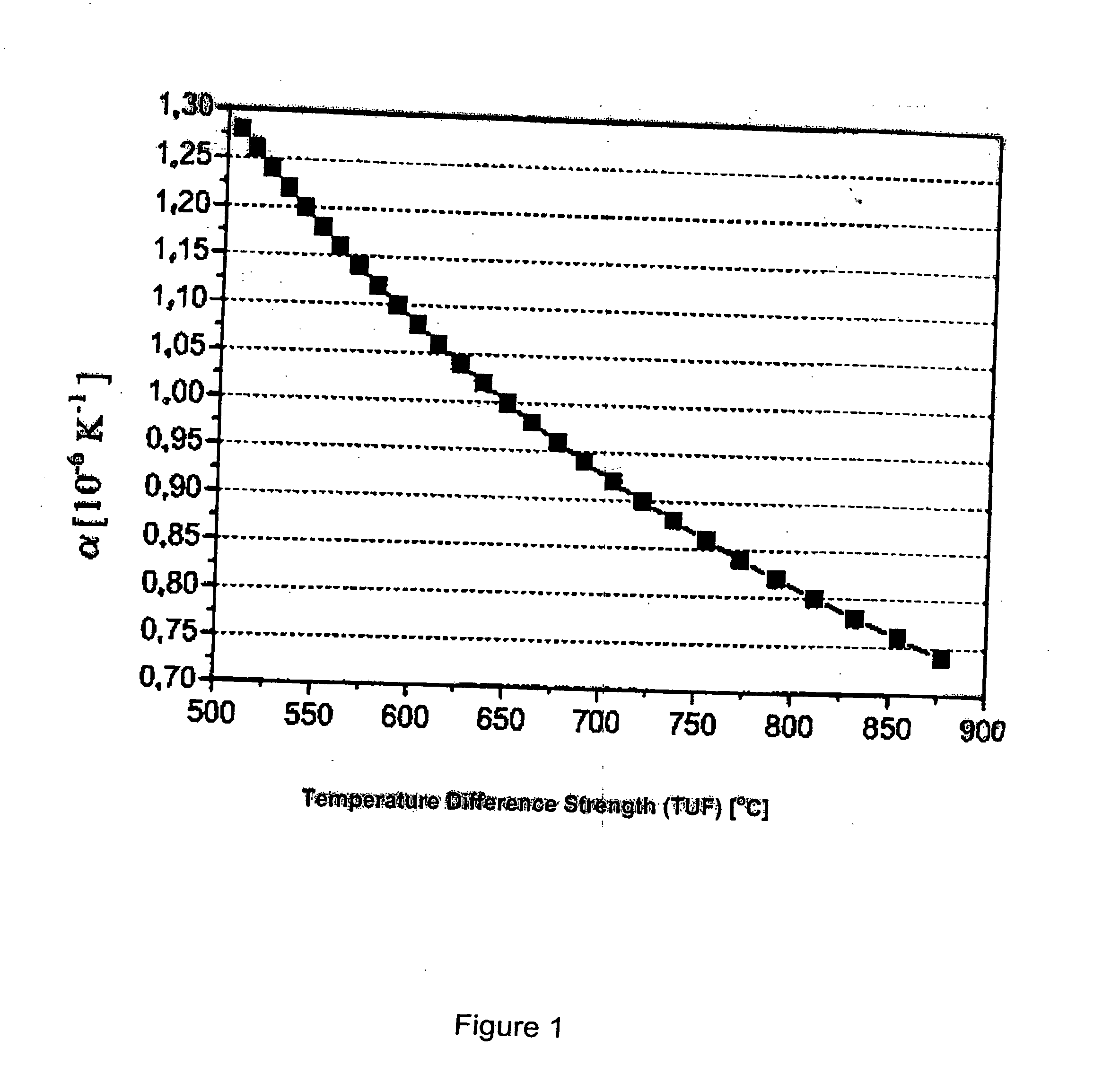Method of making a glass-ceramic article
a glass-ceramic and glass-ceramic technology, applied in glass making apparatus, induction heating, induction heating apparatus, etc., can solve the problems of glass-ceramic cooking surface up to about 700° c. and more can occur, scratching, increase, etc., and achieve high mechanical stability
- Summary
- Abstract
- Description
- Claims
- Application Information
AI Technical Summary
Benefits of technology
Problems solved by technology
Method used
Image
Examples
Embodiment Construction
[0043] The temperature difference resistance (TUF) is increased with the help of the method according to the invention. Glass-ceramics with a TUF of up to about 750° C. can be made with the method according to the invention. Chemical concentration gradients for KMK glass-ceramics with different high TUF values, which were measured by X-ray fluorescence analysis, are illustrated in FIGS. 2a to 2d.
[0044] The distribution coefficients (defined as the ratio of concentration at the surface to bulk, wherein the concentration in bulk is measured at a constant depth greater than 150 μm) of zinc oxide, silicon dioxide and potassium oxide in the glass state at various depths greater than 160 μm are illustrated in FIG. 2a. These same distribution coefficients are shown in FIG. 2b for the pre-ceramicized state, i.e. measured in the high quartz mixed crystal phase. In contrast to the glass state, in which the distribution coefficients for all three components is essentially a constant value equ...
PUM
| Property | Measurement | Unit |
|---|---|---|
| Temperature | aaaaa | aaaaa |
| Temperature | aaaaa | aaaaa |
| Temperature | aaaaa | aaaaa |
Abstract
Description
Claims
Application Information
 Login to View More
Login to View More - R&D
- Intellectual Property
- Life Sciences
- Materials
- Tech Scout
- Unparalleled Data Quality
- Higher Quality Content
- 60% Fewer Hallucinations
Browse by: Latest US Patents, China's latest patents, Technical Efficacy Thesaurus, Application Domain, Technology Topic, Popular Technical Reports.
© 2025 PatSnap. All rights reserved.Legal|Privacy policy|Modern Slavery Act Transparency Statement|Sitemap|About US| Contact US: help@patsnap.com



